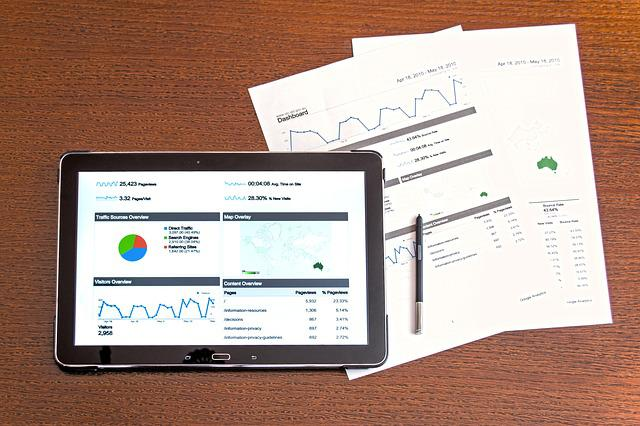Starter Guide to User Research
User experience research evaluates the end user’s experience with a product, service, or work function.
By doing UX research, you can understand–and improve–why customers behave the way they do with your product or business. This process can help create better solutions and make your company more efficient.
This article will teach you everything you need to know about this critical practice at a high level.

User Research Overview
The user experience (UX) of a product, service, or system encompasses the journey of how people interact. It is an umbrella term that includes the entire range of user-centered design and development activities.
User research is a multidisciplinary field that involves understanding the needs of a user and designing products that are more efficient and usable. User researchers identify and analyze the different points on the user’s journey throughout their experience.
UX starts with understanding users’ needs and wants. Often, these are captured in personas, empathy maps, service blueprints, and/or journey maps. These artifacts are then used to develop prototypes to test what users want from the product/service.
User researchers work with people who have expertise in different fields, such as software engineers, designers, marketers, and product managers. They also interact with users directly to understand their needs better.
User researchers may also be involved in the design process to help design teams make informed decisions.
Conducting UX research can be time-consuming and expensive, but companies must understand how their users perceive them.
UX researchers typically use qualitative or quantitative approaches depending on the type of study they want to conduct.
Qualitative research might ask questions like “What’s your favorite feature?” while quantitative research might ask people how much they would be willing to pay for a product.

How User Experience Research Helps Companies
User experience research helps companies improve the quality of products and services offered by them and the overall user experience. It is an essential part of any company’s strategy.
The goal is to help companies understand what motivates consumers, frustrates them, and where they go after using a product or service. This allows the company to create products that effectively meet customer needs while also ensuring that they meet regulatory compliance.
Research helps companies in several key ways by:
- Increasing revenue through identifying market gaps
- Reducing costs by helping steer product direction according to actual user needs
- Understanding what their customers want to produce better products and services
- Improving product quality
- Identifying the key areas where they can contribute to better user experiences
User research permeates throughout the product design cycle. It involves a team of people that are involved in the process of designing and developing a product. The researcher will lead the research, but it truly takes team members’ involvement to improve the customer experience.
In the early stage of research, the team seeks to understand the needs and wants of the target audience, which will help determine the design goals for their product. All of your team’s hands are needed for this activity, and it should be done before any design or development work begins.
Skipping that first user-research stage can lead to significant problems like product misjudgment, poor UX design, and increased cost to fix mistakes.
It all comes down to this question: How can you create a product if you do not know what problem it will solve for users?
If you do not know the problem, then it will be difficult for people to see how your product can solve their problems.
If a company does not know what problems they are solving for their users, they will likely end up with something that no one wants or needs.

Benefits of User Research
The following are some of the benefits of UX research:
- Improved customer satisfaction
- Improved customer retention rates
- Insights into how users feel about your product
- Create a better product that meets user needs.
- Understanding how users are using your product
- Finding out what features your customers want more of
Types of UX Research
UX research is an essential part of the design process because it helps designers understand users’ needs and motivations. This helps them in designing better products with a user-centric approach.
It can be done using qualitative methods or quantitative methods.
- Qualitative research: This is a process that involves observing how people use, experience, and react to your product in their natural environment. They are often done in focus groups or one-on-one interviews with users.
- Quantitative research: This process involves measuring the data collected from conducting UX research on your product with tools like surveys, user testing, and analytics.
Examples of User Research Methods
While qualitative research and quantitative research are essential, they are not unique to user research specifically. User research has specific methods that I outline below, all of which we offer to our clients here at Grounded Insights.
A/B Testing
A marketing technique used to compare two versions of a product or service and determine which one is better. A/B testing is not just limited to digital products and services. It can also be used for physical products like food items, cosmetics, etc.
Card Sorting
Learn about the structure of a collection of objects. The first step in card sorting is creating a list of topics you want to sort into groups. You’ll want to make sure that each subject has a few different labels so that you can easily distinguish between them.
The next step is to separate the cards into piles, each with one label. Then, group the cards by label and place them in their respective piles. Finally, move any remaining cards back into the pile they came from and start over again with a new list of topics.
Contextual Inquiries
Observing people in their natural context and not in a lab. Instead of interviewing people, you watch them in their natural context at home or work. Contextual observation is also used for marketing purposes where you observe people’s behavior as they shop or use your product or service.
Diary studies
Focuses on the day-to-day activities of a target audience over a defined period. The goal is to learn more about how they use your product/service daily.
First Click Testing
Examines what a target user clicks on first on a website or app interface when they start interacting with it. It is an efficient way to see what the user wants the most and where they are struggling.
Surveys and Questionnaires
We all know about surveys. We’ve seen and done plenty of them. For a user research study, the first step in designing a survey is understanding what you’re trying to measure. This is where both quantitative and qualitative methods come into play. You can create a survey around these two data fields or combine them for more insight into your audience’s needs.
User Interviews
Interviews are a great way to gather feedback from your target audience. They can be conducted face to face or online.
Conducting user interviews is a great way to get insight into your target audience and discover what they are thinking about. It is also an excellent way to build trust with them and make them feel like you care about their opinions.
Usability Testing
Typically done by having an individual or group of users try to complete a task with the product in question. The participants are asked to rate their feelings and thoughts on how easy it was to complete the task while they were doing it. This allows for qualitative and quantitative data that can be used to compare different products and processes.
Usability testing aims to improve user experience by analyzing user behavior and providing feedback about what users like, dislike, or find confusing about their product. There are many user testing tools out there these days to make this process easier!

Before Starting User Research
Now that you’ve learned about these different user research techniques, you might be wondering how do I choose from all of these user research methods?
It’s imperative to develop a research plan before starting with any particular research method. Never go into a project with a predetermined solution or user research method in mind. If you do that, you’re not allowing user research to perform at its full potential and power.
Consider the following questions before starting your user research:
- What are the goals and objectives of your project or product?
- How does it relate to user experience?
- How does it fit into your company’s overall strategy?
- What are the possible scenarios that could happen with this project or product?
- How will you measure success?
- What would be the best course of action if there was an issue with this project or product in terms of user experience?
Once you better understand what you’re trying to accomplish through your user research, you can pick from the many user research methods and determine which user research tools you’d like to use.

Applying User Research Findings
It’s always best to run user research with a plan for acting upon those research findings.
The following are some of the ways in which you can apply UX research findings to your projects and products:
- Analyze the data and determine what people want from a product or service.
- Conduct usability tests on your prototypes to understand how users react to them. This will help you make changes before the project goes live.
- Use data to make better decisions about when to launch a new product, what features need to be included, and how it should be marketed.
- Make sure you have a clear understanding of what your users want from your product or service. This will help you create compelling design solutions for them.
Keep those ideas in mind when you plan on conducting user research.

Challenges Associated with User Experience Research
Just like with anything valuable, there are always challenges. The challenges associated with user research are varied and diverse. They include:
- Difficulty in getting feedback from users without being intrusive.
- Difficulties in getting participants who are representative of the target audience.
- A lack of understanding about what makes a good user experience: it’s hard to understand what makes a good UX because it can be subjective.
- Creating a sense of urgency for stakeholders.
- Managing expectations.
- Time constraints.
- Limited budget.
- Lack of resources.
This can be mitigated with a strong research operations (ResearchOps) function in place. At Grounded Insights, we offer ResearchOps strategy consulting services.

Learning More About User Research
If you are interested in learning more and getting started with user research, the best place to start is by doing your own. This will give you a hands-on experience of what it’s like to conduct a user research session and what you can expect from it.
There are many ways to get started with user research. You can start small and work your way up. If you’re unsure where to start, it’s best to start with a small project that doesn’t require a lot of resources and is easy to manage.
There are a lot of ways to get started in user research. Here are some of the most popular ways people get started in user research:
Step 1: Get your hands dirty and do some basic research on the field.
Step 2: Watch videos and read blogs about what you want to know more about.
Step 3: Start doing your own research on topics that interest you.
Step 4: Join a community where people share their insights and knowledge with other members.
Step 5: Talk to your customers. This is the easiest way to get started, and it’s also one of the most common ways people do their first user research project. Find out what your customers are looking for by talking to them in person or over the phone. Ask them what they want from your product, how they use it, and what they like or dislike.
If you’d like more guidance on enabling self-service user research in your business, we offer strategy consultations and services for this very need at Grounded Insights.

Why Should You Hire a User Experience Researcher?
Hiring a UX researcher is a great idea for any business, especially startups. They can help you identify the pain points of your product or service and make improvements to it.
Here are some of the benefits of hiring UX researchers:
- UX research will also help you understand what users want from your product
- User research will also be able to identify the problems that arise from using your product and how they can be fixed
User experience researchers are the people who ensure that the product is built in a way that meets the needs of its users. They are experts in understanding and interpreting user behavior, which helps them design better products and services.
These researchers can be an invaluable asset to your company because they can help you understand your customer’s needs. They will look at all aspects of the product, including usability, design, marketing, etc.
They are experts in user-centered design. They look at the users’ needs and create solutions that are tailored to their needs.
For these reasons, companies need to hire UX researchers who understand human behavior and have an eye for detail.
At Grounded Insights, we offer hands-on user research services to our clients.

Final thoughts
Companies should use UX research to improve their product or service, and UX researchers should use a variety of methods to gather data and take a holistic approach to their design process.
In today’s world, it is vitally important to understand how to design better products/services for real people that fulfill their needs. No one has the patience or time to deal with bad software.
Contact us today for help with your user research needs!





